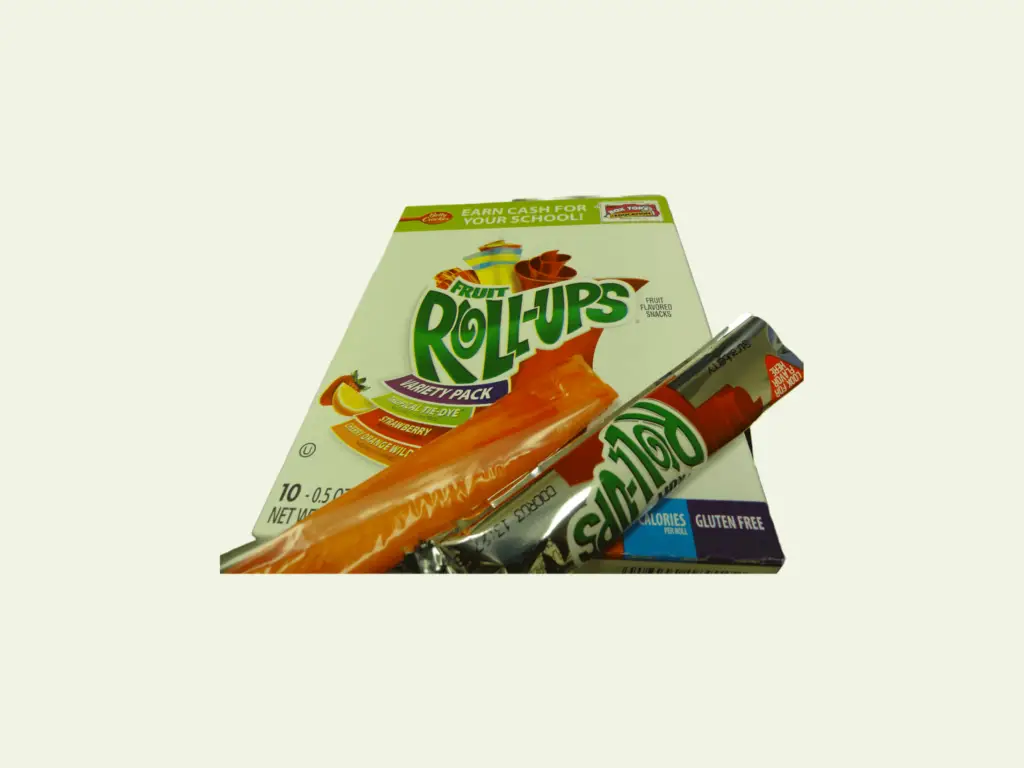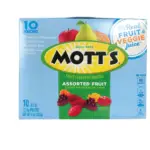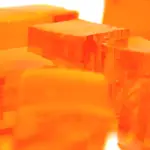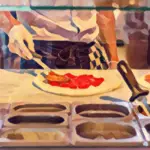Fruit Roll-Ups have been enjoyed since the early 1980s when they were first introduced in U.S. grocery stores. As people have become more health conscious through the years, there has been an increase in people wondering what is there food.
One of the most commonly asked questions is whether Fruit Roll-Ups contain red dye. This article will inform you of the dyes used in Fruit Roll-Ups. It will also advise you of the main concerns with these dyes.
Do Fruit Roll-Ups Contain Red Dye?
Fruit Roll-Ups do contain red dye. In fact, they contain four different dyes, including Red 40, Yellow 5, Yellow 6, and Blue 1. These dyes are used to give the snacks their bright and vibrant colors, which make them appealing to consumers, particularly kids.
| Fruit Roll-Up | Red Dye (Yes or No)? | Artificial Dyes Used? |
|---|---|---|
| Strawberry Blast | Yes | Red 40, Yellow 5, Yellow 6, Blue 1 |
| Jolly Rancher – Watermelon & Green Apple | Yes | Red 40, Yellow 5, Yellow 6, Blue 1 |
| Tropical Tie-Dye | Yes | Red 40, Yellow 5, Yellow 6, Blue 1 |
| Blue Razzberry | Yes | Red 40, Yellow 5, Yellow 6, Blue 1 |
Here are the full ingredients of Strawberry Blast Fruit Roll-Ups to give you an idea of what is in these fruit flavored snacks:
Corn Syrup, Sugar, Pear Puree, Maltodextrin, Palm and/or Palm Kernel Oil. Contains 2 % or less of: Citric Acid, Sodium Citrate, Monoglycerides, Fruit Pectin, Malic Acid, Vitamin C (ascorbic acid), Natural Flavor, Color (red 40, yellows 5 & 6, blue 1).
Keep in mind that ingredients can change at any time. Be sure to reference the Fruit Roll-Ups box for the most accurate ingredient information. Do not rely on the above or any other third party to make a buying decision based on ingredients.
SEE ALSO>>>Is There Red Dye in Red Vines?
Concerns With Artificial Food Colorings
Nine artificial color additives have been approved for use in foods by the U.S. Food & Drug Administration (FDA). However, despite government approval, there are certainly concerns that people have with these man-made dyes.
Below you will find some of the primary potential health effects of the dyes found in Fruit Roll-Ups. We encourage you to do your own research on these dyes if they are a concern for you or your family.
Red 40 (Allura Red AC) is a commonly used food dye that is derived from petroleum. It is used in a wide range of food and drink products, including candy, baked goods, and soft drinks.
While the FDA has approved the use of Red 40 in food products, some people have concerns about its potential health effects. Some studies have linked Red 40 to hyperactivity in children, allergies, and there have also been concerns about its potential carcinogenic properties (source).
Yellow 5 (Tartrazine) and Yellow 6 (Sunset Yellow) are also used in Fruit Roll-Ups to primarily give the snacks their yellow and orange colors. These dyes have also been believed to cause allergic actions in some people. Additionally, older studies have shown Yellow 5 potential might bring on asthma attacks (source).
Blue 1 (Brilliant Blue) is also has a potential link to allergies. Furthermore, the Center for Science In The Public Interest states that this dye may have the potential to produce kidney tumors in mice based on the results of an unpublished study. Lastly, a test tube study found the potential for the inhibition of nerve-cell development (source).
It should be noted that despite the studies on rodents and the potential for cancer in them related to artificial dye, research does not show that these dyes cause cancer in humans when consumed as intended (source).
Final Thoughts
Fruit Roll-Ups do contain red dye, along with three other synthetic dyes. While these dyes have been deemed safe for consumption in the amounts used in food products, some people may still have concerns about their potential health effects. As with any food product, it is important to read the ingredients label and make informed choices about what you choose to eat.
References:
•fruitrollups.com
•Watson, S. (2019, October 25). Understanding food dye allergies. Healthline. Retrieved April 27, 2023, from https://www.healthline.com/health/allergies/understanding-food-dye-allergies#:~:text=Also%20called%20Sunset%20Yellow%2C%20Yellow,%2C%20skin%20lesions%2C%20and%20hives.
•Cleveland Clinic. (2023, April 6). Is Red Dye 40 safe? Cleveland Clinic. Retrieved April 27, 2023, from https://health.clevelandclinic.org/red-dye-40/
•Food dyes: A rainbow of risks. Center For Science In The Public Interest. (n.d.). Retrieved April 27, 2023, from https://www.cspinet.org/sites/default/files/attachment/food-dyes-rainbow-of-risks.pdf
•Anderson, E., & Li, J. (2022, January 21). 101 series – food dye. Center for Research on Ingredient Safety. Retrieved April 27, 2023, from https://www.canr.msu.edu/news/101-series-food-dye#:~:text=The%20FDA%20has%20approved%2036,%2C%20Orange%20B%2C%20Red%20No.
Image Credit – inazakira/flickr







